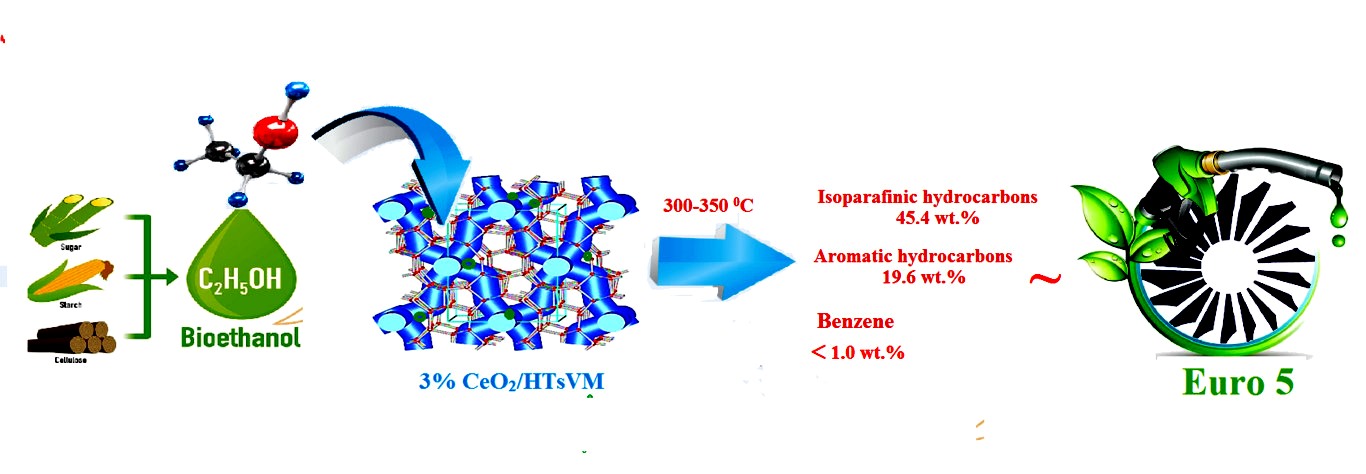Effect of Solid-Phase Modification of High-Modulus Zeolite TsVM with Cerium Oxide in Conversion of Bioethanol to Hydrocarbons
DOI:
https://doi.org/10.31489/2959-0663/2-25-1Keywords:
zeolite TsVM, cerium oxide, modification, selectivity, isomerization, aromatization, catalyst, surface, porosity, acid centers, bioethanolAbstract
The catalysts used for the conversion of bioethanol into hydrocarbons were obtained by solid-phase modification of high-modulus zeolite HTsVM (SiO2:Al2O3 = 40) of the ZSM-5 type with cerium carbonate followed by heat treatment at 550 °C for 4 hours. The reactions were carried out in a flow reactor with a fixed catalyst bed in the temperature range of 300–450 °C at atmospheric pressure in order to study the effect of cerium oxide concentration in the HTsVM on its selectivity for isomerization and aromatization products. The modification of zeolite HTsVM with cerium oxide was shown to result in a change in its structural and acidic characteristics, as well as its selectivity for cracking, isomerization and aromatization reactions. The isomerisation selectivity of a catalytic system based on zeolite ZSM-5 can be increased by modifying it with rare earth or transition metals, which gives the catalyst a bifunctional character. This increase in isomerisation selectivity and decrease in aromatization selectivity are due to a significant reduction in the density of strong acid sites, the formation of additional Lewis cation sites and a decrease in total pore volume, as well as an increase in mesopore volume. The optimal 3 % CeO₂/HTsVM catalyst demonstrates high stability (30 hours) and high selectivity for isomerization products (44.90–46.06 %) within the temperature range of 300–350 °C. The gasoline fraction obtained using the 3 % CeO2/HTsVM catalyst at 300 °C is enriched in isoparaffinic hydrocarbons (48.73 wt.%) and complies with the Euro 5 standard with regard to aromatic hydrocarbon content (21.17 wt.%) and benzene content (<1.0 wt.%).

Downloads
Published
How to Cite
Issue
Section
License
Copyright (c) 2024 Eyyub S. Mammadov, Fuad Sh. Kerimli, Nargiz F. Akhmedova, Sabit E. Mammadov, Sakina E. Mirzaliyeva

This work is licensed under a Creative Commons Attribution-NonCommercial-NoDerivatives 4.0 International License.
This work is licensed under a Creative Commons Attribution-NonCommercial-NoDerivatives 4.0 International License.
Authors retain copyright and grant the journal right of first publication with the work simultaneously licensed under a Creative Commons Attribution License (CC BY-NC-ND 4.0) that allows others to share the work with an acknowledgement of the work's authorship and initial publication in this journal.



